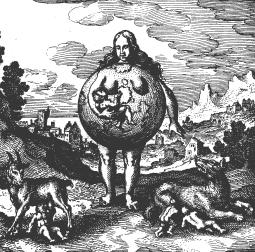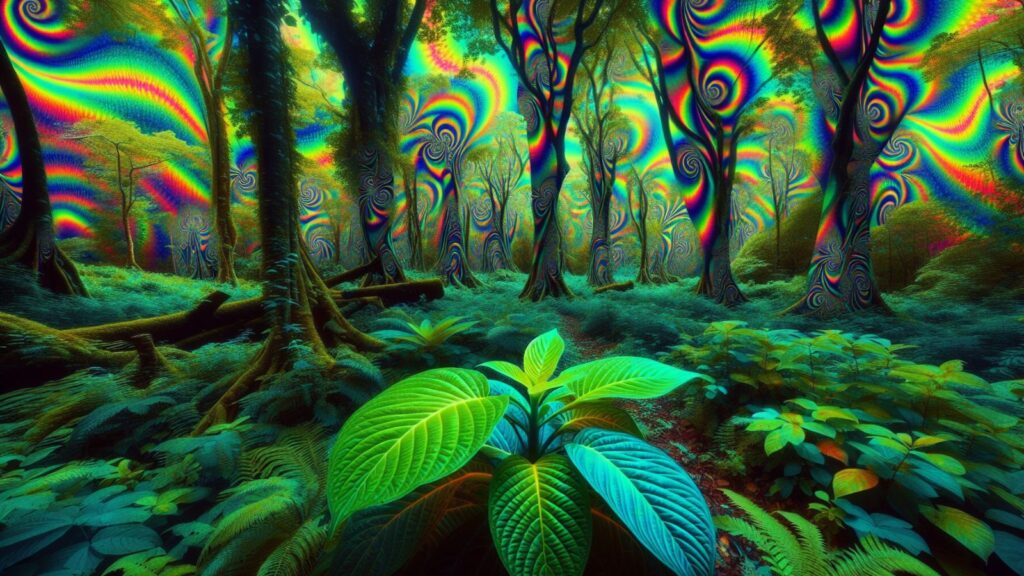It may be that two wrongs don’t make a right, but two problems, carefully juxtaposed, can sometimes point the way to a solution. One outstanding problem of our time is the imposition of intolerant fundamentalist faith, exemplified mainly by the Abrahamic religions, Judaism, Christianity, and Islam. These creeds revere an off-planet father god who promises a special status for his flock, and threatens divine retribution on all those who do not conform to his plan (read: HIStory). Redemptive religion looks outside humanity for the direction of human evolution. This is a huge problem for those who seek a sane and sustainable future on purely human terms.
The other problem, which might be juxtaposed to this one, is the destruction of the biosphere by the father god’s chosen species: i.e., ourselves. While it may be debated if we, the pesky human species, are actually capable of destroying the biosphere, one thing is certain: we have for some thousands of years been violently engaged an effort to conquer nature and dominate the planet. We are the unique species whose ecocidal tendencies threaten our own survival. This is the second huge problem that impedes the way to a viable future in which the children of this earth can thrive in creative concord with the planet itself, the Great Mother.
Now put the two problems together, and the solution glints at the seam: to live sanely on the planet requires overcoming the insanity of off-planet religion. In my new book Not in His Image, I show that the path toward sacred ecology free of privileged species assumption of paternal religion has been blazed by Pagan shamans and seers of indigenous Europe whose schools for coevolution, known to scholars as the Mysteries, were brutally eliminated with the rise of Roman Christianity. All the Mysteries were dedicated to the Magna Mater, the Great Mother, whom today we call Gaia… The following is an excerpt from Not in His Image.
Sacred Ecology
If there is any real prospect of recovering and reviving Gnosis today, it will require looking closely at problems endemic to the Piscean Age, which the telestai were unable to solve, or denied the opportunity to solve. Deep ecology may well find the spiritual and mythic dimension it lacks in the Sophianic vision of the Mysteries–such, at least, is the premise of this book. I cannot predict how this will happen, or even if it will happen, but I can offer a rough sketch of the conditions required for it to happen.
Gnosis is not a religion, yet it could well be formulated in a holy trinity: Gaia, other species, Anthropos. Each point of the trinity concerns the ultimate question of how we as human beings view life. In other words, the trinity comprises three perspectives: our view of Gaia, the living planet; our view of all species apart from ourselves, including microbial and molecular entities; and our view of our own species. The issues left unresolved by the telestai involve working through to a clear formulation of all three of these views. I propose to look upon this process, not as a grim chore of tackling arcane, exasperating problems, but as an adventure we are invited to undertake in order to reclaim the Sophianic vision.
A Sentient Planet
Consider first our view of Gaia, the living planet. This is, let’s say, the apex of the trinity of sacred ecology. After many years of reflection, James Lovelock is careful to qualify the theory he introduced to the world: “I am not thinking in an animistic way, of a planet with sentience,” he says in Gaia: The Practical Science of Planetary Medicine. Well, he may not be, but a great many others are. The central problem in our view of Gaia is how to look beyond what hard science supposes, but without going all fuzzy with mystical pretensions. This is precisely where the Goddess mystique fails the day, of course. It brings into play a set of wooly animistic beliefs about the planet. Both James Lovelock and Lynn Margulis resist the animism inherent to the mystique, and for good reason. The confectionary haze of New Age mysticism and the soft gloss of Neopagan sentimentality both obscure the Sophianic vision. Animist beliefs will not meet the challenges left unresolved by the seers of the ancient Mysteries, but Gaia theory will become animistic, one way or the other. It is just a matter of how.
The Gaia hypothesis and deep ecology appeared in the world almost simultaneously. These two propositions would seem to be closely related, but so far they have not merged, nor have they become associated either in popular or specialist discourse. One reason may be that specious assumptions attached to Gaia theory, mainly by New Age visionaries who champion the idea of a sentient planet, block the very facets of the theory that might be compatible with the principles of deep ecology. The specious assumptions concern the questions, Is Gaia benevolent? (denied by Margulis); Is Gaia able to control the planet in a conscious, intentional way? (denied by both Margulis and Lovelock); and Does humanity have a special role to play in Gaian biophysics? (variously disputed by both Margulis, Lovelock, and others). But if the advocates of the Goddess mystique that has grown up around Gaia theory are to be believed, the answer to all the above questions is a resounding yes. This affirmation inspires and encourages many people who are deeply concerned about the fate of the planet–but is it true? Or is it just wishful thinking on a global scale? A case of cosmic make-believe?
In the initiatory revelation of the Mysteries the participants came to know Gaia by direct contact with the Organic Light. But that was mysticism and not science, right? Lynn Margulis defines science as “a way of enhancing sensory experience with other living organisms and the environment generally.” With a sharp glance in the direction of Goddess worshippers, she warns against “debilitating biomysticism” and the “deification of the earth by nature nuts.” Well, a Gnostic would say that her definition of science is a pretty good definition of biomysticism. It is not the least bit “debilitating” to enhance sensory experience by deepened rapport with nature. On the contrary, the practice of biomysticism restores the palingenesis of the ancient Mysteries: regeneration through rapturous surrender to the life force.
In this book, I have advocated animism and asserted that Gaia is sentient, but not as matters to be accepted on belief, or rejected because of their unscientific character. Rather, they are propositions to be tested. How would we verify the sentience of Gaia, anyway? How could it be tested scientifically? How can we know that the planet can feel and respond as an animal does? To put the question in another way, How might Gaia communicate her sentience to us? The first point of the trinity–our view of the living planet–raises the formidable issue of communication. Anthropologist Jeremy Narby stated the issue with elegance: “How could nature not be conscious if our own consciousness is produced by nature?” Thinking logically, Narby assumes that the consciousness we have cannot have evolved from anything less conscious. But human consciousness is intimately bound up with language. If nature (Gaia) is really conscious, how can she let us know that she is, unless she has the language to do so?
Ah, there’s the rub. Our view of Gaia will stall out in blind speculation unless we can allow that she can communicate with us in language as we know it. Unless this is possible, we will never be able to confirm that she is sentient in the same way animals are, and we ourselves are. Ratcheting Narby’s question to another level, I would ask: How can nature that produced a species gifted with language not be capable of using the language of that species to communicate with it? The Peruvian shamans who initiated Narby into visionary rites with the psychoactive potion ayahuasca attested to such communication. They said that the sacred plants talk to them, teaching them many things, including how to use the plants correctly. That is, nature talks to them in the language she enabled them as humans to evolve. Is that not utterly logical?
But it can be objected that Gaia, Mother Nature, does not have a larynx, mouth, and tongue. She lacks the physical organs of speech. Yes, she does, but we also speak without using those organs. Thinking is a subvocal language that we hear as if it were audible. We do not need a tongue to communicate mentally. Granted, most of our mental communication consists of talking to ourselves “in our heads”–the internal monologue. If we cannot yet communicate telepathically, one to another, this is only because we lack the skill to deliberately receive and transmit the subvocal language of our thinking. But what if Gaia, who equipped us with our communicating faculties, can already exhibit telepathic abilities that we may only evolve in the future? That being so, she could talk to us in any language on earth without needing a mouth and tongue. According to the testimony of native peoples who use psychoactive plants to access the Gaian mind, this is exactly what she does.
———————————–
Not in His Image: Gnostic Vision, Sacred Ecology, and the Future of Belief. Copyright 2006, Chelsea Green Publishing. Reprinted by permission.











